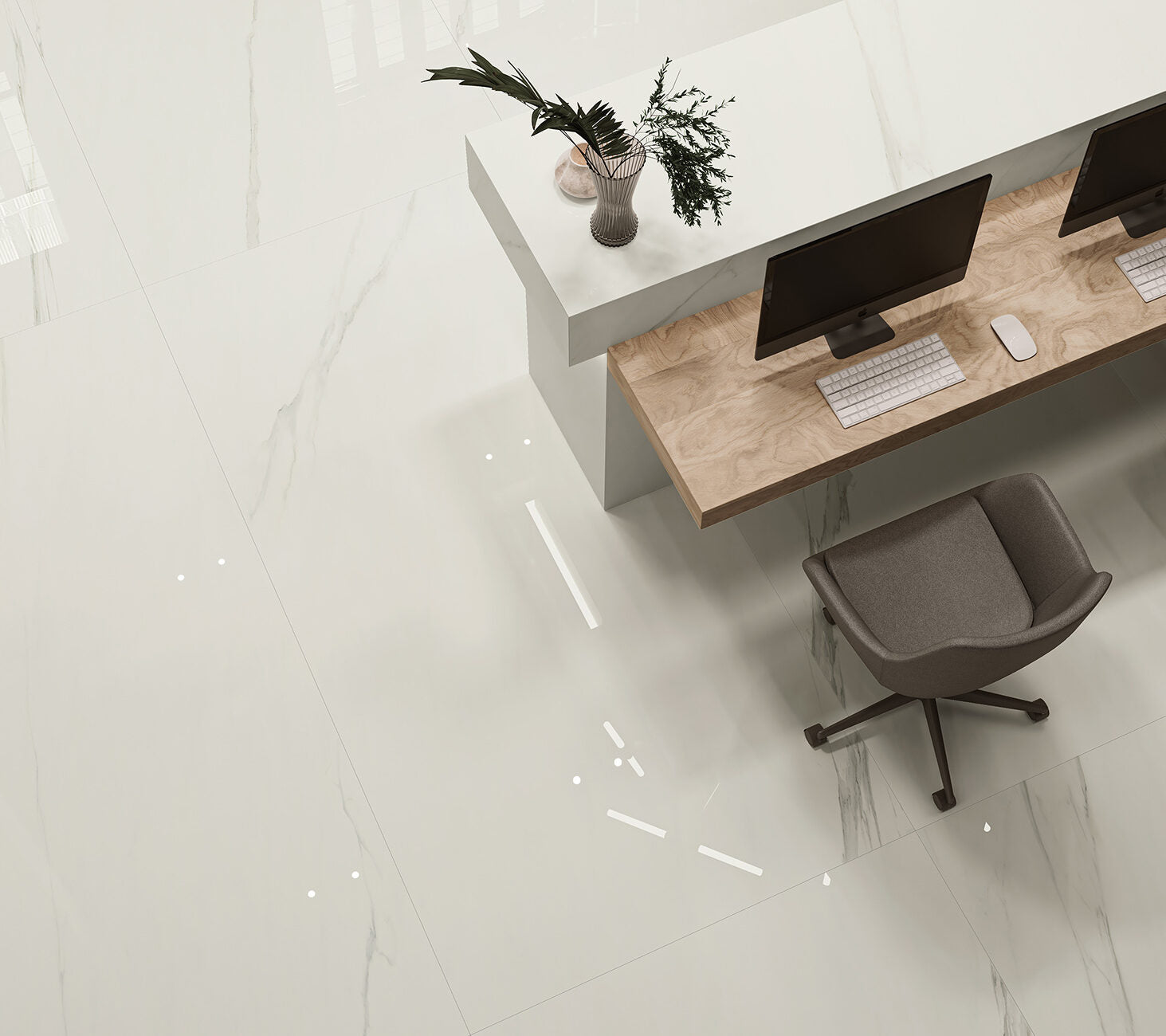In the dynamic world of interior design, where innovation meets spatial constraints, choosing tiles for small spaces becomes an art in itself. Beyond the mere functional aspects, the right tile selection holds the potential to transform confined areas into stylish havens. Embark on an exciting journey, unraveling the intricacies of maximizing style in minimal spaces. This comprehensive guide is designed to help you make thoughtful choices, blending aesthetics seamlessly with functionality.
Embracing Light Colors: Creating the Illusion of Space
The first step in elevating small spaces involves embracing the timeless power of light colors. Shades of white, cream, or soft pastels act as an enchanting canvas, reflecting natural light and creating the illusion of openness. This artful play of hues effortlessly lifts the ambiance and imparts a feeling of airiness.
Extend this strategy across both walls and floors, allowing light-colored tiles to interact harmoniously. Consider glossy finishes for an extra touch of luminosity, making this approach particularly effective in spaces like bathrooms, kitchens, and compact entryways.
Large Format Tiles: Streamlined Elegance
In the pursuit of streamlined elegance, large format tiles emerge as a design ally for small spaces. Their expansive surfaces minimize visual interruptions, creating a seamless look that exudes sophistication. Beyond aesthetics, these tiles offer the added advantage of easy maintenance.
Extend the use of large format tiles to both floors and walls, especially in confined areas such as bathrooms and kitchens. The reduced number of grout lines not only enhances the aesthetic appeal but also simplifies the cleaning and upkeep process.
Mirrored and Reflective Tiles: Doubling the Impact
To amplify the allure of small spaces, consider the strategic introduction of mirrored and reflective tiles. These tiles act as visual magicians, bouncing light throughout the room and conjuring a sense of depth and openness. Additionally, they infuse an element of glamour and sophistication.
Employ mirrored or reflective tiles as accents or backsplashes, or even cover entire walls depending on the room's layout. Mosaic patterns add dynamism to the play of light and reflection, further contributing to the illusion of a more expansive space.
Bold Patterns and Colors: Strategic Accents
While the wisdom of light colors prevails, the judicious introduction of bold patterns or vibrant colors can infuse small spaces with character and visual interest. This strategic approach allows for self-expression without compromising the overall sense of spaciousness.
Identify a focal point, such as a feature wall or floor, to showcase tiles with bold patterns or vibrant hues. This deliberate choice draws the eye, creating excitement without overwhelming the space. Opt for geometric patterns or colorful accent tiles for an injection of style.
Seamless Transitions: Extending Outdoors
Blurring the lines between indoor and outdoor spaces is a subtle yet impactful way to maximize style in confined areas. Consistency in tile choices, both indoors and outdoors, fosters a sense of continuity, making the small space feel expansively connected to the outdoors.
Extend the choice of tiles seamlessly to outdoor areas, such as patios or balconies, using the same or complementary designs. This fluid transition enhances the overall spatial experience, creating a harmonious connection between interior and exterior realms.
Conclusion:
In the intricate dance of style and space optimization, choosing tiles for small spaces requires a delicate balance. By embracing light colors, integrating large format tiles, strategically introducing mirrored and reflective surfaces, selectively incorporating bold patterns or colors, and creating seamless transitions to outdoor areas, you can elevate your small spaces into stylish retreats. Remember, the essence lies not only in the aesthetics but in the thoughtful synergy between style and functionality. With these guiding principles, your petite interiors can effortlessly embody both chic design and a sense of spaciousness.





